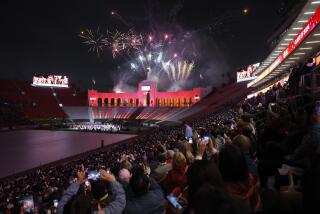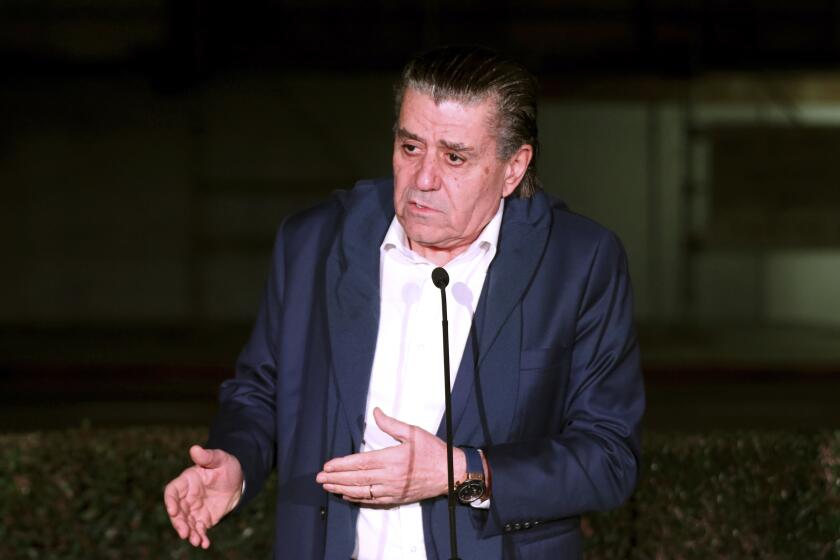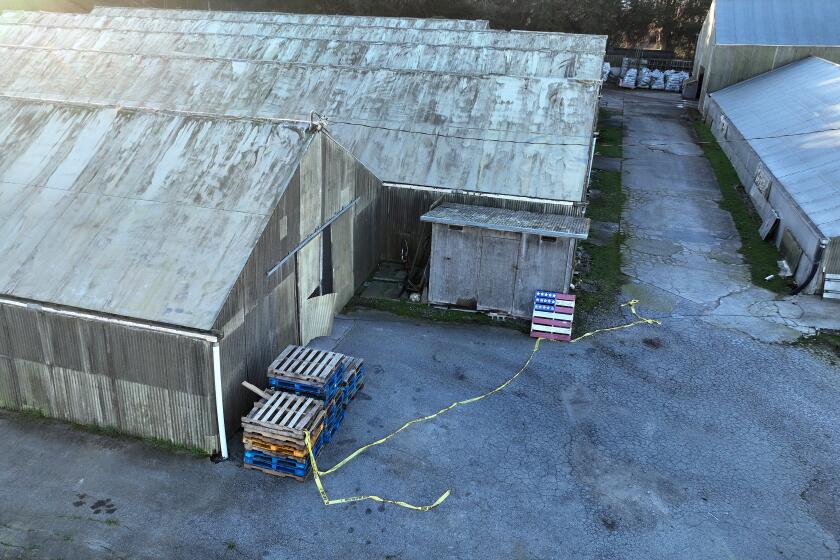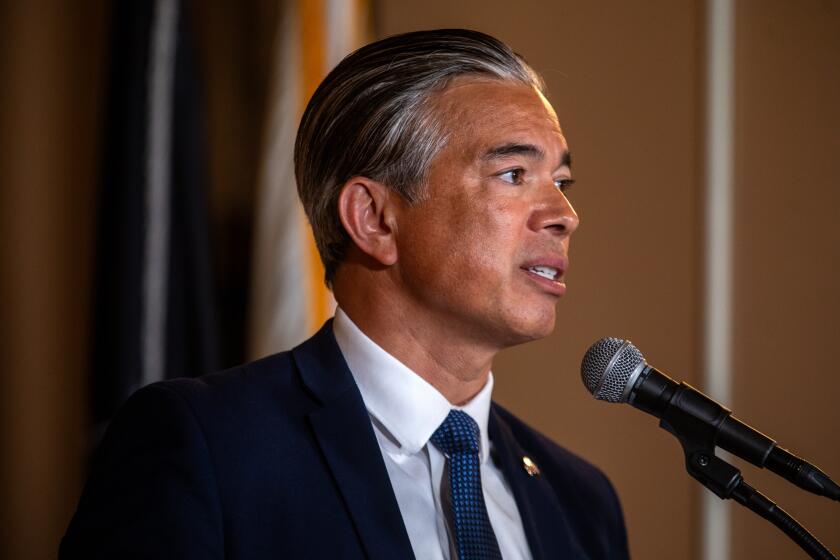Adopt-a-Grave Revives Two Cemeteries
People all over America adopt children. In this East Bay city, they adopt graves.
Not just any grave, but final resting spots in the community’s two historic cemeteries--Alhambra, dating back to 1851, and St. Catherine’s, established in 1870.
The “Adopt-A-Grave” program is the linchpin of a volunteer effort that has led to the restoration of the cemeteries. And hundreds of people in Martinez, as well as various civic organizations, have responded to it.
“Adoption” papers for each grave come with a biography of the person buried in it. More importantly, with the adoption comes responsibility.
A person or group adopting a grave promises to care for the burial site. As a result, the nearly 4,000 graves in the two cemeteries are immaculate. Instead of weeds, there are flowers. Tombstones are upright and in place. And burials, which once had ceased at both cemeteries, have resumed.
Indeed, the program not only has transformed the two cemeteries into sources of community pride, it has led to major celebrations on Memorial Day and Veterans Day. This year, all of the city’s veterans’ organizations are to gather for a special service at Alhambra Cemetery.
It hasn’t always been like that.
Ten years ago, the two cemeteries were choked with underbrush and high weeds. Tombstones had been toppled by vandals and were hidden from sight.
At St. Catherine’s, a retaining wall had given way, loosing the dirt next to it and exposing several caskets and human remains. “It was horrible,” recalled Charlene Perry, 67, the city’s historian.
Funerals were no longer conducted in either cemetery because of the sad state of affairs. And as the cemeteries sat neglected, their future appeared in doubt.
The Catholic Church, which owns St. Catherine’s Cemetery, was preparing to remove the tombstones, relocate the graves and sell the land to developers.
Across the street, a similar fate apparently awaited Alhambra Cemetery. Members of the association that owned it had died and no one had paid taxes on the land for years. The state scheduled a tax sale to dispose of the property; the likely buyers were developers who planned to build expensive homes and condominiums on the choice graveyard property high on a hill overlooking scenic Carquinez Strait and Suisun Bay.
That’s when Perry and several other Martinez residents went into action.
“Some of us got to thinking, ‘Hey, wait a minute. This is sacred ground, the final resting place for nearly 4,000 men, women and children who spent their lives in Martinez,’ ” the historian said.
It was Perry who came up with the idea for the Adopt-A-Grave Program. The Catholic Church and the Martinez City Council, which assumed ownership of Alhambra Cemetery and paid its delinquent taxes, agreed to the proposal.
The council also created a cemetery commission and named Perry and four others as members to serve as caretakers for the burial site, as well as coordinate efforts to restore St. Catherine’s.
Records of burials at both cemeteries were lost. Cemetery commissioner Phyllis Wainwright, 73, spent a year copying names from each tombstone in Alhambra Cemetery, alphabetizing them, noting grave locations and transcribing them to a directory at the cemetery entrance. Cemetery commissioner Margaret Silva, 62, spent a year doing the same at St. Catherine’s.
The cemetery commissioners then spent months scouring history books, city and county records, newspapers and interviewing local residents to develop biographies on all the deceased for adoption papers.
When the Adopt-A-Grave Program was announced, the cemetery commission was swamped with volunteers. “We had some weird calls, too,” recalled Perry. “Like how do you adopt a dead person?”
In a gratifying development for the commissioners, many of those participating in the program are youngsters. “Getting the children involved is very important. We wanted them to have a feeling for history, to have a reverence for what has gone on before,” said Wainwright, lifelong Martinez resident and retired teacher.
The Catholic Church has spent money upgrading retaining walls, cemetery walkways and roads in St. Catherine’s Cemetery. The City Council, meanwhile, now includes the Alhambra Cemetery in its annual budget for the same type of work.
Both cemeteries contain the remains of several well-known California pioneers. Dancer Carolyn (Papinta) Holpin, who lived from 1867-1907 and in her heyday was the toast of European capitals, is buried in Alhambra Cemetery. She was called the “Flame Dancer,” a reference to the erotic dance she performed with 33 yards of red chiffon.
Also buried in Alhambra is Joseph Reddeford Walker, who in 1833 became the first non-Indian to see Yosemite Valley. He was characterized by author Washington Irving as “one of the bravest and most skillful of mountain men.”
More to Read
Start your day right
Sign up for Essential California for news, features and recommendations from the L.A. Times and beyond in your inbox six days a week.
You may occasionally receive promotional content from the Los Angeles Times.






